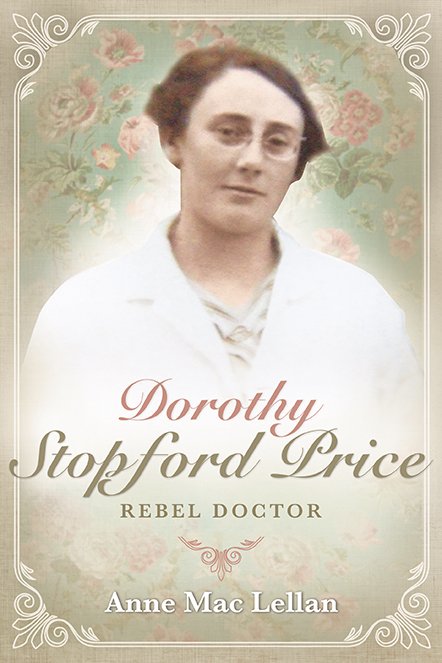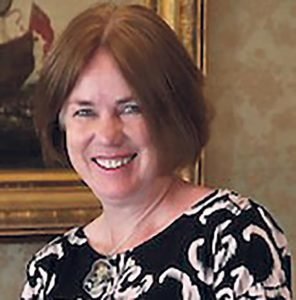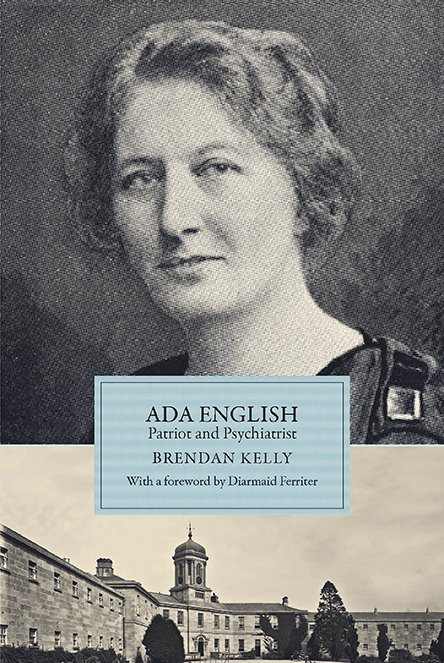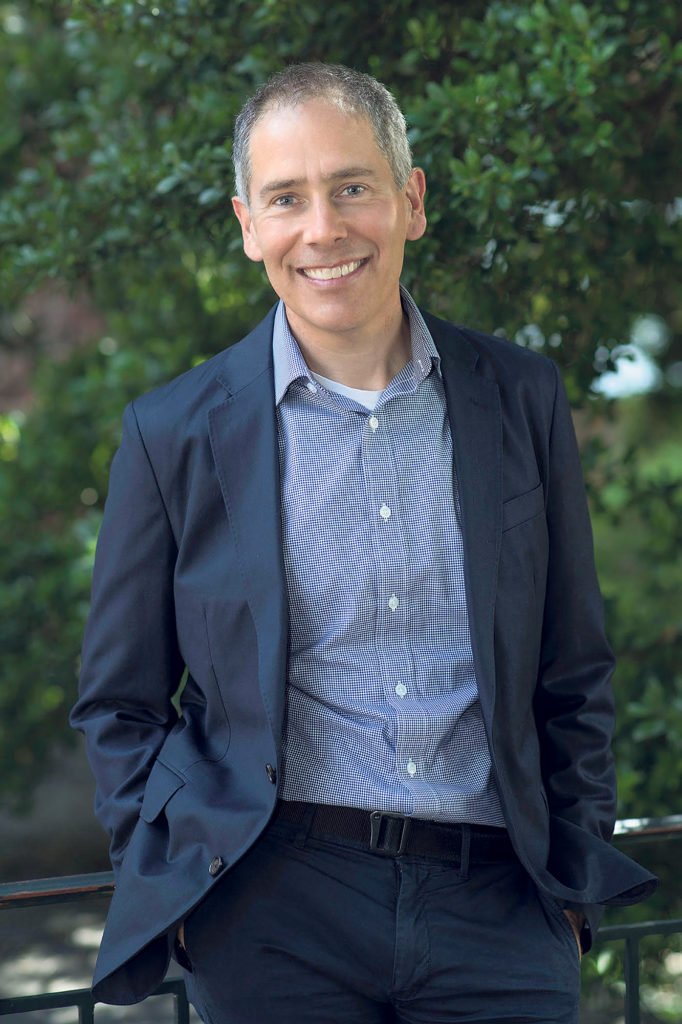As Irish and international doctors face into the Covid-19 crisis, David Lynch examines what can be learned from previous pandemics
“Not unlike an evil dream; still, lots [of patients] recover too.” Dr Dorothy Stopford Price, writing in 1919 on her experience in the Meath Hospital, Dublin, during the ‘Spanish flu’.
From reading the comments of Irish doctors on Twitter and other social media platforms in recent weeks, it is clear that many are experiencing a range of emotions, from courage to trepidation, as the Covid-19 pandemic spreads.
Just over a century ago, a previous generation of Irish doctors and healthcare workers faced into a pandemic that emerged unexpectedly and swept across the globe, including our own island.

The ‘Spanish’ influenza outbreak (H1N1 variety) in 1918/19 was the most deadly flu pandemic recorded. Globally, it killed an estimated 50-to-100 million people. In Ireland, officially 20,057 died from the flu. However, historian Dr Ida Milne, author of Stacking the Coffins: Influenza, War and Revolution in Ireland 1918-1919 (Manchester University Press, 2018) has described that figure as “conservative”. She recently told The History Show on RTÉ Radio One the number was low “because doctors were far too busy treating the ill to be that worried about registering the dead”.

Dr Milne said the pandemic in Ireland “silenced entire communities and towns”, and in scenes that are familiar to us now, shops closed and public and sporting gatherings ceased while people stayed at home because of illness, or from fear of catching the disease.
Then, as now, doctors and other healthcare workers were at the frontline of the pandemic battle.
Dr Dorothy Stopford Price (1890-1954) is now celebrated as one of the foremost figures in Ireland’s fight against tuberculosis (TB), as well as for her significant political involvement in the struggle for Irish independence.
Dark reality
However, when the Spanish flu pandemic reached Irish shores, Dr Stopford Price was only in her late 20s and at the very beginning of her journey in medicine. The years 1918/19 were to be an important period in what turned into a successful medical career.
“In October 1918, Dorothy, a third-year medical student, was working in the Meath Hospital, Dublin, as a clinical clerk, where she ‘exercised her powers cautiously’ on the wards, as she knew she was ‘horribly ignorant and junior’,” Dr Anne MacLellan (PhD), author of Dorothy Stopford Price: Rebel Doctor (Irish Academic Press, 2014) told the Medical Independent (MI).
“She could do little other than what the ward sister suggested. ‘I am in her hands and learning a lot. We are packed with influenza cases, mostly DMP [Dublin Metropolitan Police]’.”
The young student very quickly understood the dark reality of what was happening on the wards as she experienced the death of fellow healthcare workers, but she also found inspiration from older colleagues and patients who recovered.
“Dorothy worked with two nurses on a landing in the hospital where there were about 30 ill patients. ‘It was very horrible,’ she noted, and the sister, who had guided her and been ‘particularly nice’, died of the flu,” said Dr MacLellan.
“Dorothy was also impressed by Prof William Boxwell, who was her ‘chief’ and who worked night and day. “She said that it was difficult knowing so little and death seemed very terrible.”
Confidence
Dr MacLellan said that despite the early difficult days, the future Dr Stopford Price “found her feet a fortnight into the pandemic”.
“The amount of ‘odds and ends’ of doctoring and nursing that she observed in two weeks under pressure was ‘rather astonishing and one gains confidence,’” according to Dr MacLellan.
During the huge challenge posed by the Spanish flu to the Irish health system at the time, Dr MacLellan said working practices on the wards evolved.
“When the first wave of the flu had receded, at a time when female doctors were a rarity, Dorothy declared that she didn’t believe at all in women doctors not liking to take responsibility, at least
[she]
didn’t see why they shouldn’t… it was largely a matter of knowing your work and being careful. ‘Experience and self-assurance mattered more than brains’, she declared,” said Dr MacLellan.
“In March 1919, during the next wave of the flu, Dorothy said the hospital was ‘not unlike an evil dream; still, lots [of patients] recover too’.”
Just like for young doctors now, or the recently qualified medical students drafted into the frontline of the fight against Covid-19, it is difficult to imagine a more challenging beginning to a medical career. However, Dr MacLellan said that the months of experience during the 1918/19 pandemic had a significant impact on what became a noted career in medicine.
“She (Dr Stopford Price) went on to become a confident, assured doctor who led the campaign to introduce [the] BCG vaccine into Ireland,” said Dr MacLellan.
“She became a leading international expert on childhood tuberculosis, a public campaigner for the formation of a national anti-tuberculosis league, and the chair of Ireland’s National BCG Committee.
“Her experience of Spanish flu probably resonates with many junior doctors [now] who are challenged by the current pandemic.”
Enormous
Dr Ada English was a little older than Dr Stopford Price in 1918 and was already working as a psychiatrist in Ballinasloe District Asylum in Mayo when the pandemic touched the wards of that institution.
Dr English had participated in the Easter Rising in 1916, and, following the Spanish flu, she would have a long career as a much-celebrated psychiatrist who would help revolutionise this country’s psychiatric services.

“In Ireland, the flu infected almost 800,000 people and more than 20,000 died,” said Prof Brendan Kelly, Professor of Psychiatry at Trinity College Dublin and Consultant Psychiatrist at Tallaght University Hospital, Dublin. Prof Kelly is also the author of Ada English: Patriot and Psychiatrist (Irish Academic Press, 2014).
“The pandemic had enormous effects across Irish society, but the large, overcrowded asylums were hit especially hard,” Prof Kelly told MI.
“Overall, a fifth of all patients in Belfast asylum died of the flu, and one patient in every seven in the asylums in Kilkenny, Castlebar, Maryborough and Armagh fell victim.
“Ada English, in the asylum in Ballinasloe, was at the forefront of providing care to the most vulnerable asylum patients and, as a healthcare worker, was at increased risk herself.
“And even after the Spanish flu, regular influenza outbreaks were common in the mental hospitals: In March 1941, for example, [Dr] English, as acting Resident Medical Superintendent, reported to the hospital board that ‘influenza has been widely spread through the house during the last month, particularly this last fortnight. Both patients and staff are affected…'”
In terms of a lesson from her work during the pandemic, Prof Kelly said the particular vulnerability of institutions (such as asylums) was one learning that would have relevance for today.
In recent weeks, the HSE has raised concerns over Covid-19 ‘clusters’ occurring in some healthcare settings and nursing homes.
“The key message from the asylums at that time is that people in institutional settings are at increased risk,” Prof Kelly told this newspaper.
“That was also clear with TB, which spread through the Irish asylums. In the early 1900s, TB was a major public health problem, accounting for almost 16 per cent of all deaths in Ireland, but it was an even bigger problem in mental hospitals, where it accounted for over 25 per cent of deaths.
“This was a huge challenge in Ballinasloe throughout [Dr] English’s time there, contributing strongly to morbidity and mortality, and necessitating careful planning of new buildings and developments,” added Prof Kelly.
Global lessons from the recent past
Of course, the Spanish flu and its impact in Ireland is only one example over the last 150 years of doctors having to deal with pandemic and epidemic crises.
From the Spanish flu to the more recent outbreaks of severe acute respiratory syndrome (SARS) and Ebola, doctors and other healthcare workers have always been at the forefront of any pandemic situation. But what are the differences in the experiences of doctors during those periods and now? And what are the public health messages that can be learned from past experience?
“It seems to me that the major difference between, say, this one [Covid-19 pandemic], and the 1918 influenza pandemic, is that we have had a century to prepare,” Prof Christian McMillen, Professor of History at the University of Virginia, US, tells MI.
“And especially after SARS and Ebola, we have very recent examples of what being prepared and unprepared looks like.”

Prof McMillen is also the author of Pandemics: A Very Short Introduction (Oxford University Press, 2016).
“So, it seems to me that doctors, and other healthcare workers, would rightfully feel a sense of outrage that, given all we know about how to be prepared, we were nonetheless woefully unprepared,” said Prof McMillen, who is based in the US.

Confronted
Prof McMillen adds that one of the lessons of epidemics and pandemics over the last 150 years is that public health voices often grow in importance during the crisis.
“I would like to think that across the last 150 years, as doctors confronted cholera, smallpox, TB and influenza, that their voices, experience, and evidence-based approaches to epidemics and pandemics have ultimately won-out over the voices of politicians and others who have left us unprepared and who at times seem wilfully ignorant,” he tells MI.
“For example, in London in the 1850s, you had John Snow, armed with evidence to show that cholera was transmitted through water, arguing with those who still believed, despite no real evidence, that cholera was spread through the air, through miasma.
“Today, we have [Dr] Anthony Fauci [Director of the National Institute of Allergy and Infectious Diseases in the United States] and [Dr] Deborah Birx [who serves as the Coronavirus Response Co-ordinator for the White House Coronavirus Task Force], and others, doing their best to provide Americans with evidence, while others continue to do otherwise.”
Risk
Looking back at pandemics over the last 150 years, Dr Ali S Khan, who is the author of The Next Pandemic (Public Affairs, 2016) told MI “that some things are so alike” when comparing Covid-19 to pandemics in the past. However, there are also differences.
“We appreciate the impact of our health system much more now,” said Dr Khan, who is Dean at the College of Public Health in the University of Nebraska Medical Centre (US) and former Director of the Office of Public Health Preparedness and Response (PHPR) at the Centres for Disease Control and Prevention (CDC) in the US.
“[There was] not much you could do for somebody 150 years ago.”
But comparing the Covid-19 pandemic to previous outbreaks, Dr Khan also sees a significant change in the role that healthcare workers will play.
“Also, the risk to healthcare workers is the other defining feature of this [Covid-19] outbreak,” he told this newspaper.
“I don’t think they appreciated it as much during any of the pandemics during the last 150 years — unless of course [you include] the Ebola or SARS epidemics.”
Lessons
In May 2018, MI spoke to Prof David Koh, an occupational medicine specialist who was addressing the 32nd International Congress of Occupational Health (ICOH) in Dublin.
In his talk, Prof Koh focused on the personal toll on healthcare workers and the challenges posed by the SARS outbreak of 2003. Much of what he spoke about in Dublin has renewed relevance during Covid-19.
Prof Koh qualified in medicine and specialised in occupational medicine in Singapore, where he worked for over 25 years, including during the SARS outbreak in 2003. Recounting his experience of that crisis, Prof Koh emphasised that there were lessons that doctors and other healthcare workers could take from that intense professional experience.

“We had a few painful lessons from this outbreak of SARS,” Prof Koh told an audience of international occupational health experts and practitioners in Dublin.
“The first thing that struck us very deeply was that SARS was a very grim reminder to us that healthcare work can be hazardous. We had colleagues in healthcare who came down with SARS and unfortunately, some of them even succumbed to the illness.
“If we look at the data from across the world, about 21 per cent of all the SARS patients were healthcare workers — a range that was from about 3 per cent in the US, to in excess of 40 per cent in countries such as Canada and in Singapore.”
SARS was first reported in Asia in February 2003. Over the next few months, the illness spread to more than 20 countries in North America, South America, Europe and Asia before the outbreak was contained. According to the World Health Organisation, a total of 8,098 people worldwide became sick with SARS during the outbreak. Of these, 774 died. It caused healthcare emergencies in countries as distant from each other as Singapore, China and Canada.
Worried
“The second lesson we learned from this SARS epidemic was that the threat of SARS extended way beyond the infection,” said Prof Koh.
“What do I mean by this? Reports from Canada first documented that the psychological effects were very prevalent among healthcare workers; there was a very high degree of stress experienced by over a third of hospital workers. In other countries, overwork was very common because healthcare workers had to work overtime; there were increased job demands.
“There were also social effects on the healthcare workers, as well as their families and friends.
“People close to them were worried about their health, and people close to them were worried that they might get infected.”

